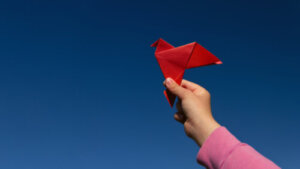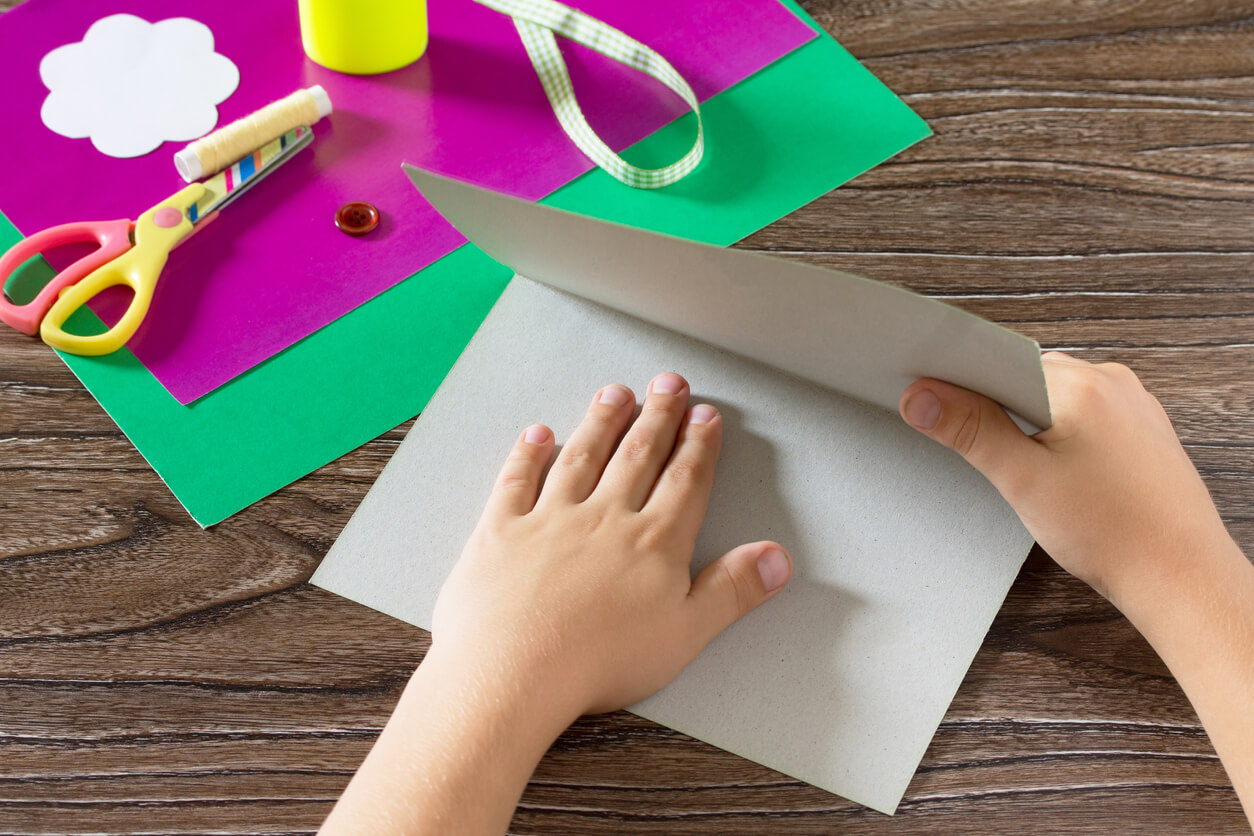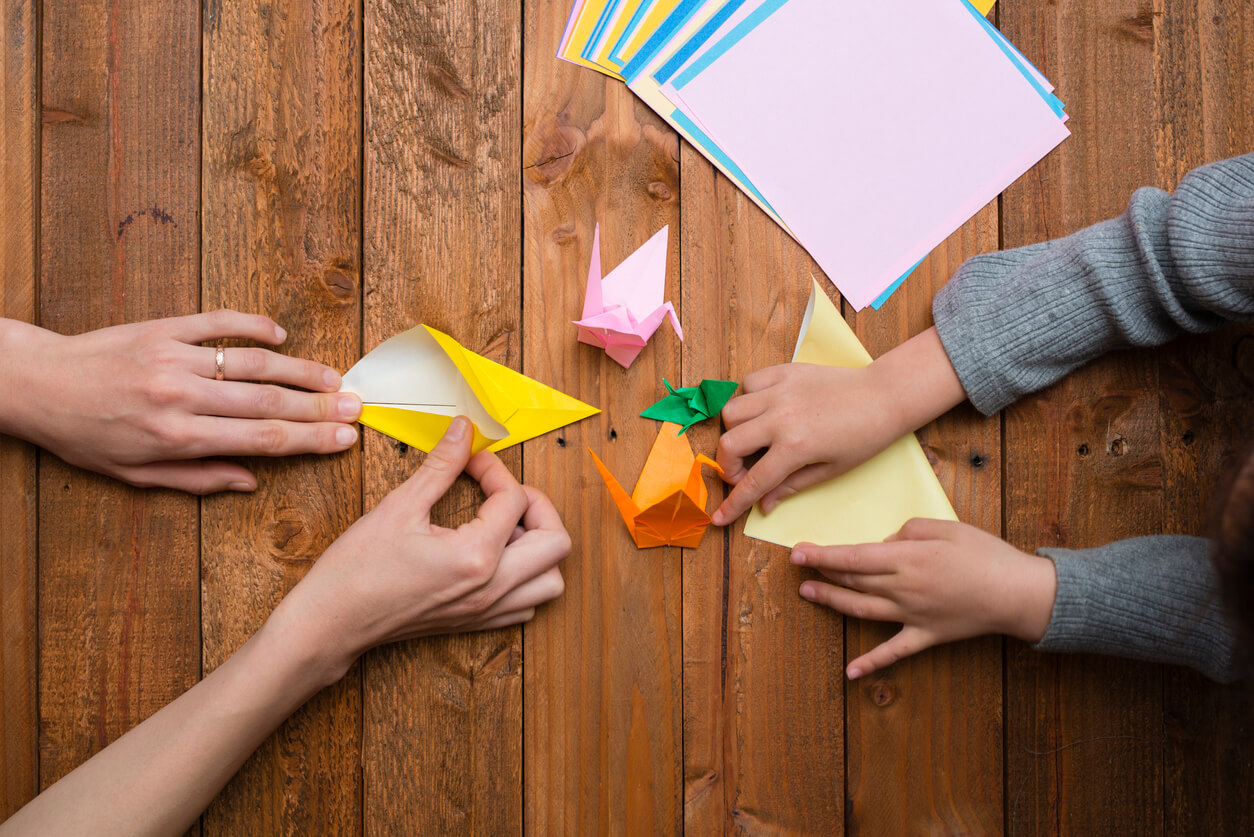How to Make Paper Birds

Creating figures is one of children’s favorite didactic activities, as they have a lot of fun playing and producing. In addition, it allows them to develop their skills and creativity. In this article, we’ll tell you how to make paper birds.
Origami, or paper folding, is an art of Japanese origin that allows you to create countless figures by making multiple folds in a sheet of paper. The most popular and easy-to-make designs are paper birds, hats, and boats. However, more complex techniques have been developed to obtain models of many shapes, such as cars, airplanes, lions, dogs, birds, insects, mammals, dragons, dinosaurs, octopuses, spiders, and many other shapes. But, let’s start with the easiest one, paper birds!
What materials do you need?
To create origami figures you must use paper as the main and only material, as you won’t need any other tool, such as scissors or glue. It’s a technique in which a design is obtained from a square or rectangle of paper of different sizes. You can make from the simplest figures, such as the classic bow tie, to the most complex models, as mentioned above.

How to make paper bow ties, step by step
In this article, we’ll focus on explaining how to make paper birds, which is the easiest craft to make by yourself at home. It consists of achieving the silhouette of a small bird, with a pointed head, two wings that support the figure at the front, and a tail at the back.
It’s a great idea for both parents and their children to do this activity together to learn and share a fun time while doing it.
- A square-shaped sheet of paper is needed. Colored paper can be used to personalize the figure.
- Fold three of the four corners of the paper inward until they touch in the center. The leftover corner is folded to the opposite side of the paper.
- Next, fold the corners to the center again, but this time, fold all four corners and turn the paper over so that the folded corners are facing down.
- Fold the square in half, so that a triangle is formed. When the triangle is ready, pull out the inner folds.
- Fold out the upper part of the figure again and then fold it in half.
- Finally, pull out the top part of the figure, which will be the head of your bow tie, while the inside, located at the bottom side, will be the tail.
- You’re done! You have your paper bird ready to play with!
Benefits of origami for children
There are many benefits of origami for children. Among them is the stimulation of concentration and attention, and the promotion of learning and imagination. In addition, it reinforces patience, activates memory, and improves the self-esteem of the little ones, as it teaches them how capable they can be to perform any task.
On a physical level, it improves fine motor skills and manual dexterity, as children will have to make folds to the paper and this can also contribute to the maturity of the brain. Also, it helps to understand spatial concepts, such as front, back, up or down; as well as geometric figures: square, rectangle, and triangle.

Play and enjoy creating paper figures
Paper birds are the most basic figure to get started in origami, as it’s the easiest. But, as you may have noticed, this technique requires patience, concentration, and not giving up on the first attempt. With dedication and perseverance, you can achieve these crafts, which are done quickly and whose degree of difficulty is set by your own child. Tell them to start with the simple figures and then gradually raise the level as they practice and achieve new figures.
Making origami figures is inexpensive, as children only need to take a sheet of paper out of their school bag. In addition, the activity can be practiced anywhere, whether at home, at school, or at the home of a friend or classmate.
This technique also allows for the strengthening of family ties, as it’s an activity that can be done together with parents, children, siblings, and grandparents. With so many advantages that origami brings to our little ones, let’s start creating origami figures!
Creating figures is one of children’s favorite didactic activities, as they have a lot of fun playing and producing. In addition, it allows them to develop their skills and creativity. In this article, we’ll tell you how to make paper birds.
Origami, or paper folding, is an art of Japanese origin that allows you to create countless figures by making multiple folds in a sheet of paper. The most popular and easy-to-make designs are paper birds, hats, and boats. However, more complex techniques have been developed to obtain models of many shapes, such as cars, airplanes, lions, dogs, birds, insects, mammals, dragons, dinosaurs, octopuses, spiders, and many other shapes. But, let’s start with the easiest one, paper birds!
What materials do you need?
To create origami figures you must use paper as the main and only material, as you won’t need any other tool, such as scissors or glue. It’s a technique in which a design is obtained from a square or rectangle of paper of different sizes. You can make from the simplest figures, such as the classic bow tie, to the most complex models, as mentioned above.

How to make paper bow ties, step by step
In this article, we’ll focus on explaining how to make paper birds, which is the easiest craft to make by yourself at home. It consists of achieving the silhouette of a small bird, with a pointed head, two wings that support the figure at the front, and a tail at the back.
It’s a great idea for both parents and their children to do this activity together to learn and share a fun time while doing it.
- A square-shaped sheet of paper is needed. Colored paper can be used to personalize the figure.
- Fold three of the four corners of the paper inward until they touch in the center. The leftover corner is folded to the opposite side of the paper.
- Next, fold the corners to the center again, but this time, fold all four corners and turn the paper over so that the folded corners are facing down.
- Fold the square in half, so that a triangle is formed. When the triangle is ready, pull out the inner folds.
- Fold out the upper part of the figure again and then fold it in half.
- Finally, pull out the top part of the figure, which will be the head of your bow tie, while the inside, located at the bottom side, will be the tail.
- You’re done! You have your paper bird ready to play with!
Benefits of origami for children
There are many benefits of origami for children. Among them is the stimulation of concentration and attention, and the promotion of learning and imagination. In addition, it reinforces patience, activates memory, and improves the self-esteem of the little ones, as it teaches them how capable they can be to perform any task.
On a physical level, it improves fine motor skills and manual dexterity, as children will have to make folds to the paper and this can also contribute to the maturity of the brain. Also, it helps to understand spatial concepts, such as front, back, up or down; as well as geometric figures: square, rectangle, and triangle.

Play and enjoy creating paper figures
Paper birds are the most basic figure to get started in origami, as it’s the easiest. But, as you may have noticed, this technique requires patience, concentration, and not giving up on the first attempt. With dedication and perseverance, you can achieve these crafts, which are done quickly and whose degree of difficulty is set by your own child. Tell them to start with the simple figures and then gradually raise the level as they practice and achieve new figures.
Making origami figures is inexpensive, as children only need to take a sheet of paper out of their school bag. In addition, the activity can be practiced anywhere, whether at home, at school, or at the home of a friend or classmate.
This technique also allows for the strengthening of family ties, as it’s an activity that can be done together with parents, children, siblings, and grandparents. With so many advantages that origami brings to our little ones, let’s start creating origami figures!
All cited sources were thoroughly reviewed by our team to ensure their quality, reliability, currency, and validity. The bibliography of this article was considered reliable and of academic or scientific accuracy.
- Sanz Z. La papiroflexia y el desarrollo de psicomotricidad fina. España: Universidad de Valladolid: 2019. Disponible en: https://uvadoc.uva.es/handle/10324/36583
- Royo J. Matemáticas y papiroflexia. Rev. Matematicalia. 2005; 1 (1). Disponible en: http://www.matematicalia.net/index.php?option=com_content&task=view&id=25&Itemid=34
- Estrella R, Rivera F. Manual ilustrado para el desarrollo y construcción de juguetes de papel mediante la utilización de la papiroflexia. Ecuador: Universidad del Azuay: 2011. Disponible en: https://dspace.uazuay.edu.ec/handle/datos/355
This text is provided for informational purposes only and does not replace consultation with a professional. If in doubt, consult your specialist.








